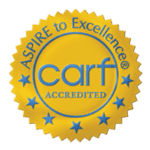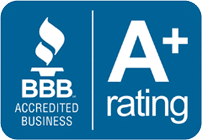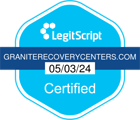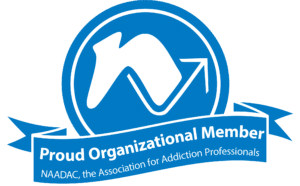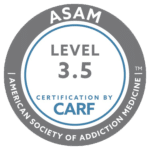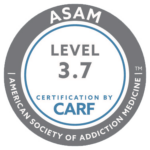Worcester Addiction Treatment Resources
Worcester is centrally located in Massachusetts and is also known as the state capital. With great public schools and universities, it attracts many residents who are looking to live in a diverse and picturesque setting. Despite its popularity and ethnically diverse setting, many locals struggle with drug and alcohol addiction.
In 2013, the rates of alcohol and heroin addiction treatments were higher in Worcester than in the rest of the state with 683 per 100,000 residents admitted for alcohol treatment. Currently, the state is in an opioid epidemic with 1,091 confirmed opioid-related overdose deaths from January to September in 2019. Approximately 4,300 people receive addiction treatment in Worcester each year.
When you’re consuming drugs or alcohol on a consistent basis, it can be easy to develop an addiction and dependency. Many people begin to use drugs or alcohol recreationally or occasionally and develop a tolerance, which can increase use. Others begin to use after suffering from trauma as a way to cope with the pain. If you’re unsure if you have an addiction, there are a few signs to look for that indicate you need addiction treatment and are a candidate for professional help. You could have a substance use disorder if:
Drug and/or Alcohol Dependency
Addiction can cause people to make drugs or alcohol their main priority. You may find that you wake up thinking about the substance and go to bed with it as the last thing on your mind. If the substance consumes your thoughts throughout the day, it’s time to seek help and consider entering a professional rehab facility.
Everything else can end up taking a back seat if the drugs or alcohol are your primary focus. You may fail to maintain your responsibilities or commitments to ensure you can continue to use the substance, and this can affect the quality of your life.
As the addiction continues, it can be easy to neglect interests, hobbies, and passions because substance use takes all of your time. If you notice that your life and commitments have drastically changed, you should consider seeking treatment in Worcester.
Enrolling in a treatment facility can allow you to regain control of your life and resume your previous hobbies and interests. You can also discover new passions and create new goals to ensure you have something to look forward to in life, which can reduce the risk of relapsing. By discovering more about what you enjoy and having other methods of coping with pain or trauma, you may decrease the risk of returning to the addiction.
Affecting Personal Relationships
Although you may have been capable of managing your drug or alcohol use over time, you may have experienced negative consequences as the substance use has continued. One of the most common consequences is strained relationships with loved ones.
You may have a marriage that is suffering or a rocky relationship with your children due to your drug or alcohol use. It’s common to have destroyed relationships due to the addiction, which can make it easy to feel isolated and have a lack of support. Many people have a smaller circle of friends and may only have relationships with other individuals who are suffering from addiction.
Relationships can also suffer if you tend to isolate yourself to ensure you can continue to use the substance without their knowledge. They may notice that you’re attempting to distance yourself or that you begin to lie about your whereabouts and actions as you try to protect your addiction.
Negatively Affecting Other Parts of Your Life
DUIs or arrests are an additional consequence of using drugs and alcohol for a prolonged period of time. Using substances can also affect your performance at work, which can result in unemployment.
Financial hardship is also common as many people spend a significant amount of money on their substance of choice. While under the influence, it can be challenging to remain responsible for managing your finances and making good decisions when it comes to handling your money. You may quickly get into debt, get behind on paying your bills, or even begin to steal as you attempt to keep up with your substance use.
Accidents can also be the result of using drugs or alcohol. You may have been the cause of a car accident or have suffered from an injury while you were high or intoxicated.
Those who are enrolled in school may also suffer from poor grades as their mental state is altered, and they have difficulty staying focused or responsible. It can be challenging to remain committed to studies or completing assignments and projects while using substances, which can result in a low GPA.
Physical and Mental Well-Being
Your physical health may also be declining due to the effects of drugs or alcohol. Those who use cocaine can begin to experience chest pain or start to suffer from seizures, which can be life-threatening. The physical effects of opioids include dizziness, constipation, vomiting, sedation, and respiratory depression. Those who suffer from alcoholism can be affected by a loss in coordination, raised blood pressure, passing out, irregular heartbeat, stroke, vomiting, and a reduced core body temperature.
One of the most common signs that addiction treatment is necessary is if an individual begins to suffer mental decline. A mental decline occurs with long-term use of drugs or alcohol and can affect all areas of the individual’s life.
Those who have a dependency on alcohol can have difficulty learning, diminished gray and white matter in the brain, loss of attention span, and memory loss. Depression is also extremely common, which can cause the individual to drink more alcohol to numb the pain.
Chronic substance use can also lead to cognitive defects, For example, those who use methamphetamine can suffer from an altered brain structure, which includes a lack of judgment and delayed memory.
The Substance Use-Mental Illness Connection
Many people don’t recognize the correlation between mental illness and addiction. In some cases, people attempt to treat their mental illness with drug or alcohol use, which only masks the symptoms of mental illness and can even enhance them over time.
Drugs alter the mind and can affect how you feel, think, and behave. The effects can encourage an individual to continue their drug or alcohol use to depress any symptoms that they experience on a consistent basis.
It’s essential to seek professional help because treating a co-occurring condition can be complicated and risky. The underlying health condition needs to be identified by a qualified health professional before treating the addiction to ensure the underlying cause is tackled.
Medical professionals are also capable of finding the right medication to prescribe to patients who are diagnosed with specific mental health disorders to reduce the risk of resorting to drugs or alcohol in the future.
Professional Help Is Available
You may be aware of the dangers of using drugs or alcohol and have had failed attempts at quitting. If you’ve been unsuccessful at dropping your habit or addiction, it’s a sign that you need the assistance of a professional. Fortunately, a number of options are available to help you get on and stay on the path to recovery. Treatment options in Worcester include:
- Inpatient care: If a substance use disorder has taken a strong hold over a person, inpatient hospitalization may be the best option. This type of care is usually offered after a person completes a safe medically supervised detox. An inpatient program provides a structured, supervised environment that many people with substance use disorders need in order to get clean. Granite Recovery Centers provides medical detoxification for people who do not need immediate medical intervention, are not a danger to themselves, and are capable of self-evacuation in the event of an emergency. During their stay, patients typically take part in group and one-on-one therapy sessions as well as other activities that help them learn to live sober lives.
- Outpatient treatment: Outpatient treatment is a great option for those who need to keep up with daily responsibilities while receiving treatment for their addiction. While it is not for everyone, this type of care can be very effective. A typical outpatient program will require patients to commit to several hours of therapy and activities each week. Intensive outpatient care is also an option for those who need to put in more time toward their recovery.
- Ongoing support: Once a person has completed an inpatient or outpatient program, it’s important to continue receiving ongoing support to avoid relapse. Examples of aftercare programs and activities including therapy sessions, group meetings, and sober living communities. This type of support can be critical for ensuring that an individual maintains their sobriety, especially if they’re at high risk for relapse.
Where Can Worcester Residents Get the Help They Need?
Many options are available in Worcester if you need help overcoming a substance use disorder and have been unsuccessful in quitting on your own. The teams at New Freedom Academy and Green Mountain Treatment Center are trained and experienced in helping patients recover.
Located on 17 acres, New Freedom Academy offers a retreat and a safe place for people to recover from addiction with trained staff available. Evidence-based practices are used and are proven to be successful in helping patients maintain long-term sobriety. Patients are exposed to Grief and Loss Therapy, Cognitive Behavioral Therapy, and even Dialectical Behavior Therapy.
Green Mountain Treatment Center is another option that is located in New Hampshire’s White Mountains. The facility offers assistance to both men and women over the age of 18. A 12-step curriculum is used with evidence-based clinical therapies led by the staff. A range of holistic therapies is also included in the treatment programs.
By recognizing a few of the most common signs that addiction treatment is necessary, it can be easier to seek help from professionals and take the first step to recovery. Learning how to identify the stage of your addiction and review your history with drug or alcohol dependency can allow you to understand if you’re a candidate for treatment.


